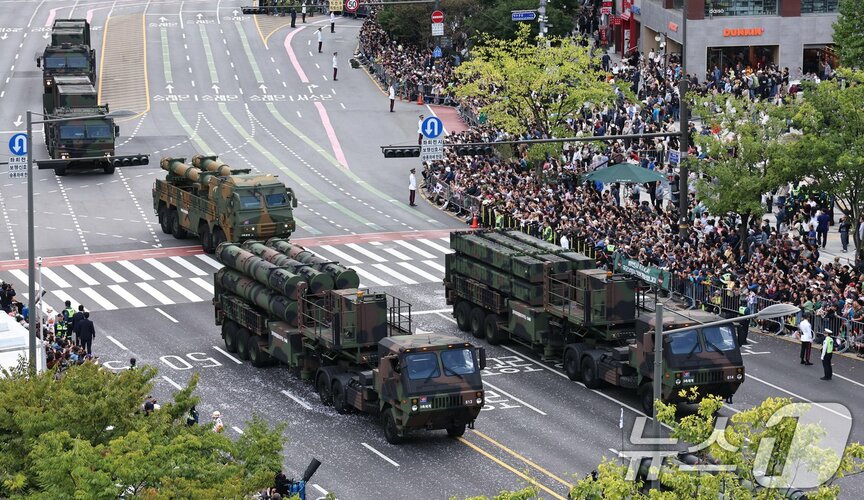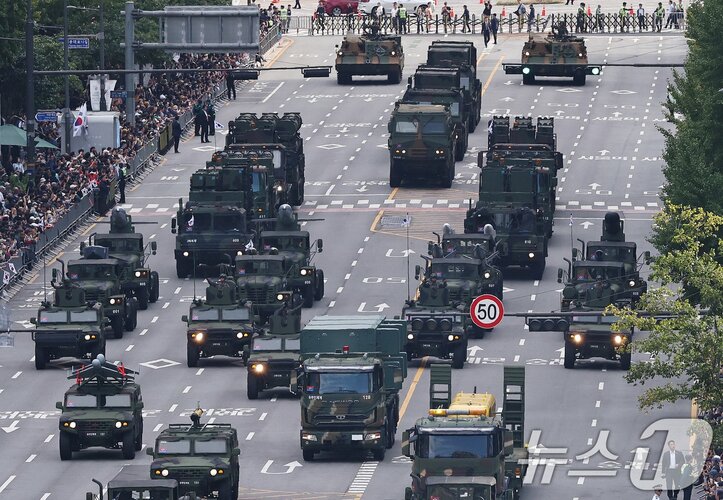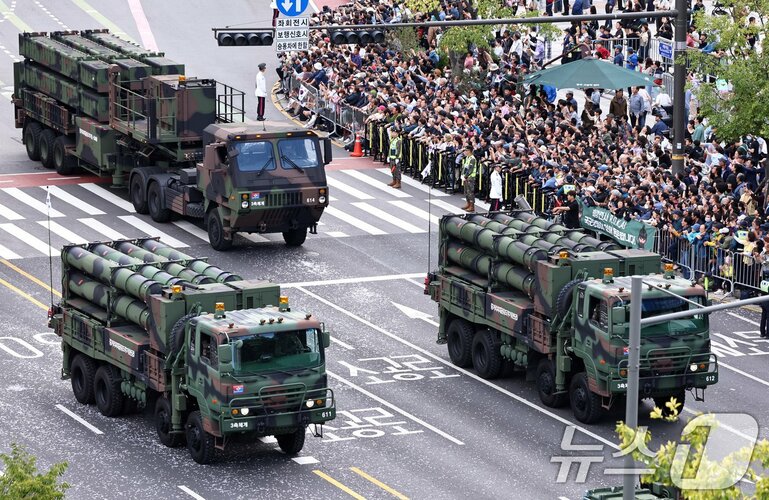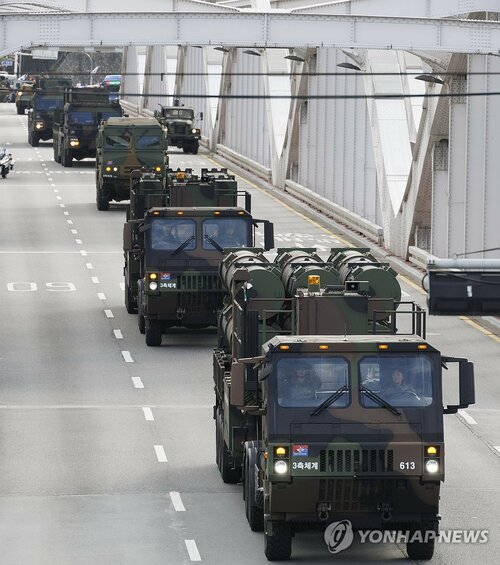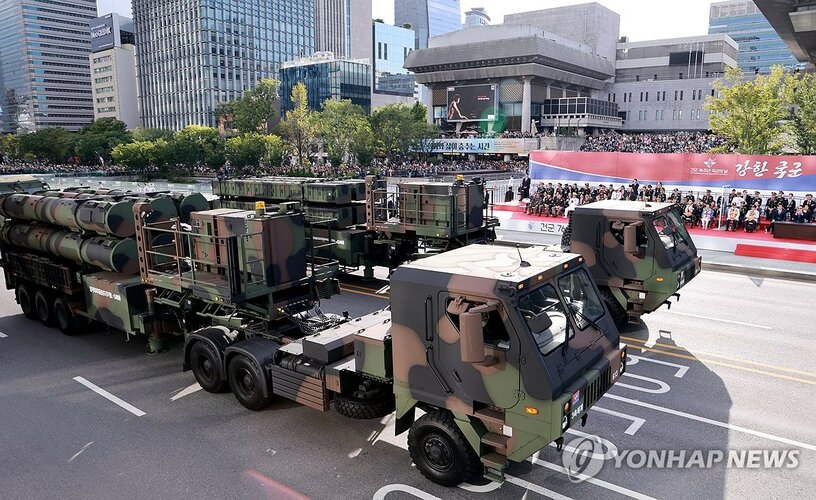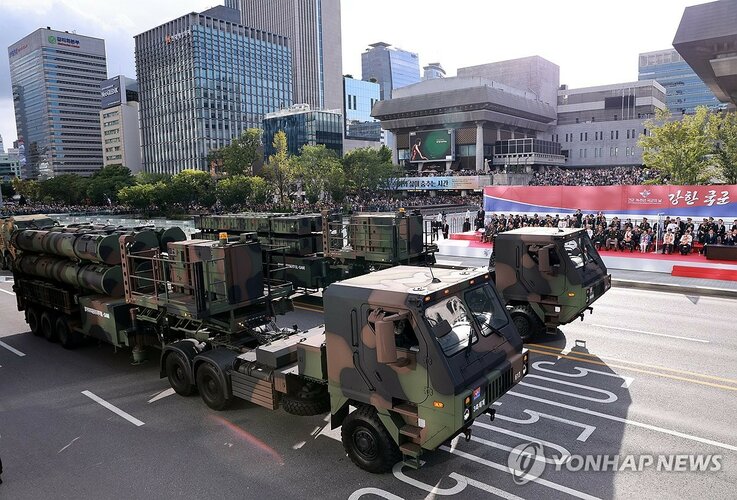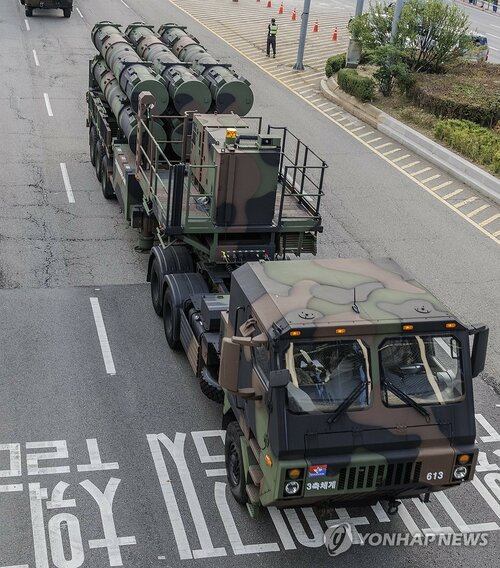Forest Green
ACCESS: Above Top Secret
- Joined
- 11 June 2019
- Messages
- 9,391
- Reaction score
- 17,114
Having revisited the thread, this can't be further from truth. KM-SAM basic system design was done by AA as noted above, but the effector design is so noticeably different I'm not sure how you could call it a variant of the 9M96 missile used in S-400.Correct - the Sth Koreans had Russian support (Almaz-Antey) - it's essentially a variant of the Russian 9M96 missile used in the S-400 system:
Cheolmae II / Cheongung (Iron Hawk) M-SAM Medium Surface to Air Missile
www.globalsecurity.org
It is said that was developed by the Agency for Defense Development (ADD) with technical support from Almaz-Antey and Fakel, based on technology from the 9M96 missile used on S-350E and S-400 missile systems. This allows it to be both different and similar at the same time and depending upon the degree of similarity could be accurately declared a variant of.Having revisited the thread, this can't be further from truth. KM-SAM basic system design was done by AA as noted above, but the effector design is so noticeably different I'm not sure how you could call it a variant of the 9M96 missile used in S-400.
Well, the problem is, it isn't a variant. The design differs too much to be called such. You could cite Global Security all you want but the differences of their designs, which is just out there for you to simply see, indicates otherwise. Else, it's just your definition of 'variant'.It is said that was developed by the Agency for Defense Development (ADD) with technical support from Almaz-Antey and Fakel, based on technology from the 9M96 missile used on S-350E and S-400 missile systems. This allows it to be both different and similar at the same time and depending upon the degree of similarity could be accurately declared a variant of.
How about listing with evidence/references some of the differences as I don't have the specifics on either...but the differences of their designs, which is just out there for you to simply see, indicates otherwise.


 asiatimes.com
asiatimes.com
As with anything, it is on someone who claims something exists to prove that, not someone doubting such existence. As in this case, you are claiming that there's a concrete connection between KM-SAM effector design and 9M96E that it could be called a variant, and I'm telling that's not true. Then it's not on me to prove that such connection doesn't exist.How about listing with evidence/references some of the differences as I don't have the specifics on either...
I have never doubted this. I've also exclusively said that there's clear AA involvement in KM-SAM development. They provided basic technological basis for the SAM system, especially the radar. But KM-SAM is still an independent product. Korea for example developed its own X-band space-feeder PESA demonstrator prior to developing the KM-SAM radar, so it's also not the case that KM-SAM was entirely designed by AA, as some other forum members have claimed on this thread.What I do know is that it is reported in multiple locations (see below for a few examples) that the S-350 Vityaz and KM-SAM/Cheolmae 2/Chung Koong are related or at the very least, that the latter was developed using technology from the former.
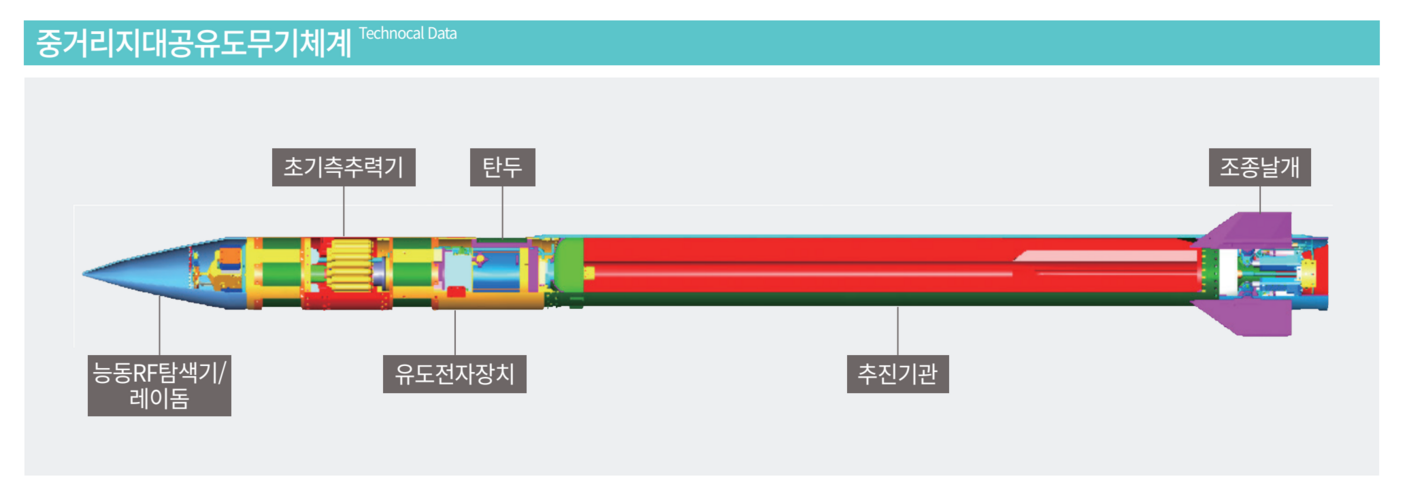
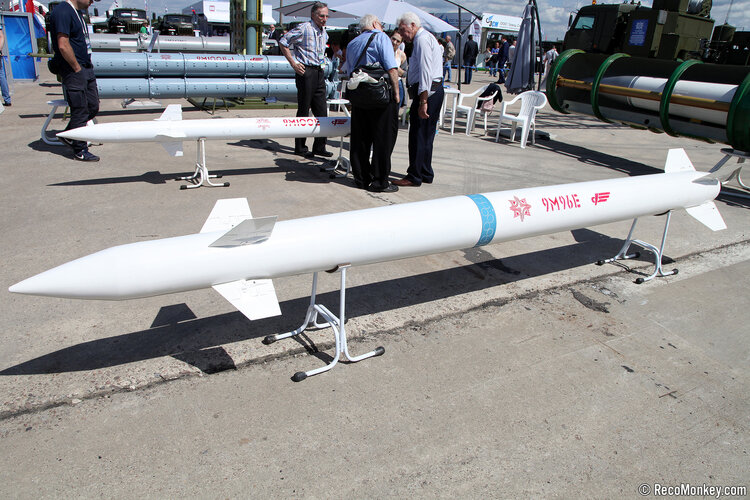
I am/was only repeating what is reported. I also therefore assert that if the Korean weapon uses technology from the Russian it could be argued to be a variant of. Now one might naturally differ as to what % commonality constitutes a variant vs a new product. For example, if a missile had the same warhead, engine, guidance and basically internals but perhaps different external features such as fins and body would that be deemed a variant of or a new weapon?As with anything, it is on someone who claims something exists to prove that, not someone doubting such existence. As in this case, you are claiming that there's a concrete connection between KM-SAM effector design and 9M96E that it could be called a variant, and I'm telling that's not true. Then it's not on me to prove that such connection doesn't exist.
Thank you, really appreciated.I'll do this tonight if someone else doesn't.
9M96 has two sets of side thrusters. One is located under the missile’s front wings, used for initial steering after the missile’s cold launch. The other set is a ring-shaped nozzle in the middle of the missile body, used for the terminal phase.As with anything, it is on someone who claims something exists to prove that, not someone doubting such existence. As in this case, you are claiming that there's a concrete connection between KM-SAM effector design and 9M96E that it could be called a variant, and I'm telling that's not true. Then it's not on me to prove that such connection doesn't exist.
I have never doubted this. I've also exclusively said that there's clear AA involvement in KM-SAM development. They provided basic technological basis for the SAM system, especially the radar. But KM-SAM is still an independent product. Korea for example developed its own X-band space-feeder PESA demonstrator prior to developing the KM-SAM radar, so it's also not the case that KM-SAM was entirely designed by AA, as some other forum members have claimed on this thread.
Most importantly, what I'm explicitly disputing is your claim that 'KM-SAM effector is the variant of 9M96', which, as I've said countless times, is outright wrong.
Although the SAM system was co-developed with Russia, the effector itself was developed by ADD and LIG Nex1, and input from Russia was limited on this front. The most notable Russian input was the cold-launch technique and the ACS side thruster technology, but as you could very easily notice, the ACS design is very different from that of 9M96 side thruster. They also differ in their warhead design, KM-SAM effector is guided by a Korean Ku-band seeker and the ACS and warhead position itself is also different compared to that of 9M96E. It also doesn't have cannards, indicating very different aerodynamics and handling characteristics. KM-SAM block-I terminal guidance solely relies on tail-fin and side ACS. The booster is also proportionately shorter on KM-SAM compared to 9M96E. When all these clear evidences can't convince you, LIG Nex1's own magazine Gndeun also mentions the same, that the SAM complex was developed with Almaz Antey but the missile was developed by ADD and them as their own design.
View attachment 709092
View attachment 709093
There's already a precedent in Korean SAM design (K-31 Pegasus) where the SAM system was co-developed with a foreign company (Thales) but the effector missile was an indigenous design (Crotale and Pegasus missile designs are very noticably different similar to 9M96E and KM-SAM).
The writing is basically on the wall and it's so easy to notice them. It's important to understand that it doesn't really matter how many media outlets claim the same thing, when none of them have a concrete first-hand source to support what's written in the article. If anything, a lot of those "report" that you've cited just parrot what they've found elsewhere without much consideration, which is especially more true when it comes to South Korean weaponery, of which credible information in English is very obscure.
9M96 has two sets of side thrusters. One is located under the missile’s front wings, used for initial steering after the missile’s cold launch. The other set is a ring-shaped nozzle in the middle of the missile body, used for the terminal phase.
But M-SAM seems to have only one set of side thrusters. Is its usage method similar to the PAC-3? The one set is used during launch and terminal phase.
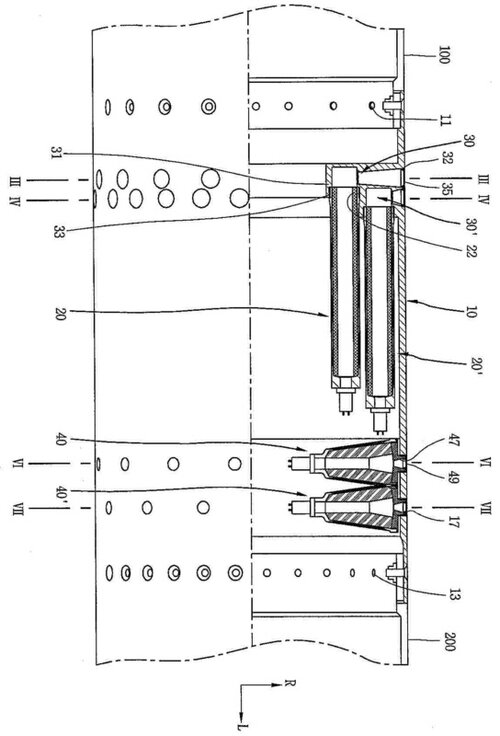
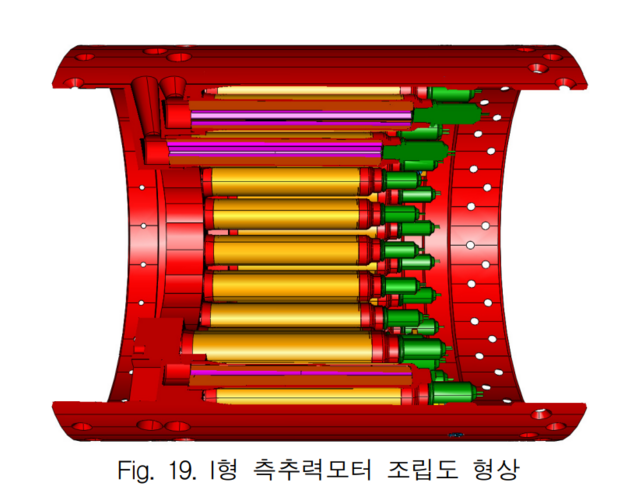
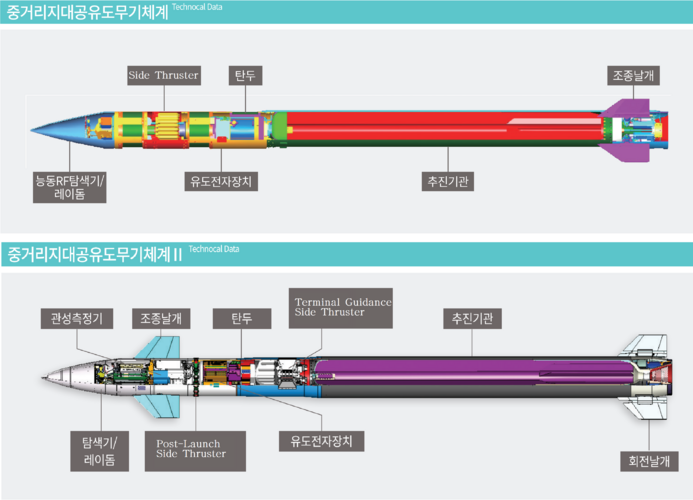
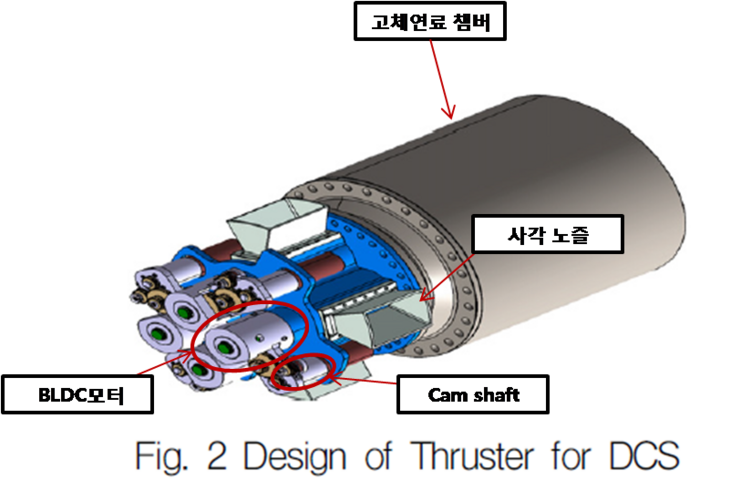
Chun-goong uses kinetic energy rod warhead, whereas to my knowledge, 9M96 variants doesn't.what is the difference between their warheads?
some korean websites have mention their differences(both directional warheads, but the details are different?), but there seems to be no data to check. I tried searching, but no results either.
I don't know what the original source material that you have translated is, but that is false info. L-SAM AAM will have its DCS side thruster placed just in front of the main propellant behind the guidance section. What it doesn't have is the post-launch ACS, since it is hot-launched unlike Chungunglooks like L-SAM AAM didn't have side thrusters.
View: https://twitter.com/W_ChiefGunner/status/1718829541739962659
As for the side thrusters of L-SAM AAM, I initially agreed with you, but recently some koreans went to the ADEX 2023 site to inquire and only then did they get this result. and korea military magazines also have the same mention (they are also at the ADEX site).View attachment 710551
(via Boltzman of BEMIL)
View attachment 710550
This is Chun-goong block 1 effector side thruster design. As you've guessed, it's a SIE similar to PAC-3 side thrusters and is used for both missile attitude control after launch and during terminal phase.
View attachment 710553
View attachment 710552
Chun-goong block 2 has two separate side thrusters, of which the terminal phase side thruster being what ADD calls a "Nozzle Closure Separation Device". Post-launch ACS is very similar to what was already being used in block 1. The new DCS is more similar to 9M96 in terms of how it is structured internally.
So overall, quite a difference for the side thruster designs for both the block 1 and block 2 effectors.
Chun-goong uses kinetic energy rod warhead, whereas to my knowledge, 9M96 variants doesn't.
I don't know what the original source material that you have translated is, but that is false info. L-SAM AAM will have its DCS side thruster placed just in front of the main propellant behind the guidance section. What it doesn't have is the post-launch ACS, since it is hot-launched unlike Chungung
Yes I could always be wrong as well, but you should also keep in mind that most of those Korean military magazines are not as credible as their English counterparts. Also, you could still identify the DCS side thruster nozzles on the mockup presented in LIG Nex1 booth.As for the side thrusters of L-SAM AAM, I initially agreed with you, but recently some koreans went to the ADEX 2023 site to inquire and only then did they get this result. and korea military magazines also have the same mention (they are also at the ADEX site).
But I will ask them to check it
I already confirmed with korean friend, the officials at ADEX confirmed this.As for the side thrusters of L-SAM AAM, I initially agreed with you, but recently some koreans went to the ADEX 2023 site to inquire and only then did they get this result. and korea military magazines also have the same mention (they are also at the ADEX site).
But I will ask them to check it
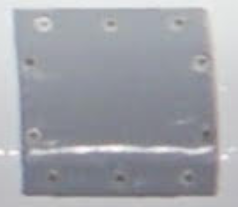
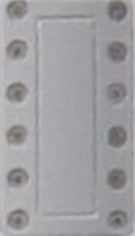
I see. If those information comes from LIG Nex1 personnel first-hand, then you must be right. I've mistaken those patches for a thruster nozzle, since they are located where the thruster nozzles were in the initial study model.I already confirmed with korean friend, the officials at ADEX confirmed this.
But did not explain the reason. He also gave me relevant pictures, you can see the difference between the "nozzles".
He also say: There are(L-SAM AAM) only 3 patches in that square shape, and if there were 4 patches the spacing would be closer; not enough space in the missile fuselage to place the side thruster.
I trust him 100% because he often attends exhibitions in person and obtains book/brochure distributed onsite. There is a lot of "pay to win" in the KR/JP field(their book and journal are more valuable, containing more info).I see. If those information comes from LIG Nex1 personnel first-hand, then you must be right. I've mistaken those patches for a thruster nozzle, since they are located where the thruster nozzles were in the initial study model.


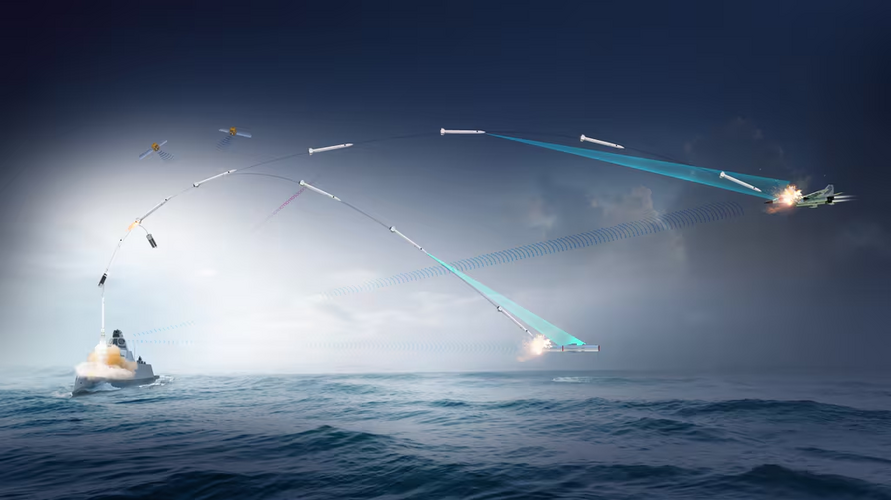
"Late 2020s" is it 2028 according to AV Week.According to the MND, the L-SAM fulfilled its “technical development goals and was judged suitable for combat” in a recent DAPA test on the system.
The production of the L-SAM will initiate in 2025, and the system is scheduled to be deployed to the military in the late 2020s, the MND said.
Some errors in the article, it mentions that the development of L-SAM II and M-SAM III will continue until 2032 and 2034 respectively, but those are the schedule for the full-service entry of all planned batteries, not the conclusion of development phase. Development will end much earlier.In a press release on 29 May, DAPA said that it will initiate the development of long-range surface-to-air missile II (L-SAM II) system and medium-range surface-to-air missile Block III (M-SAM III) system in 2024.

